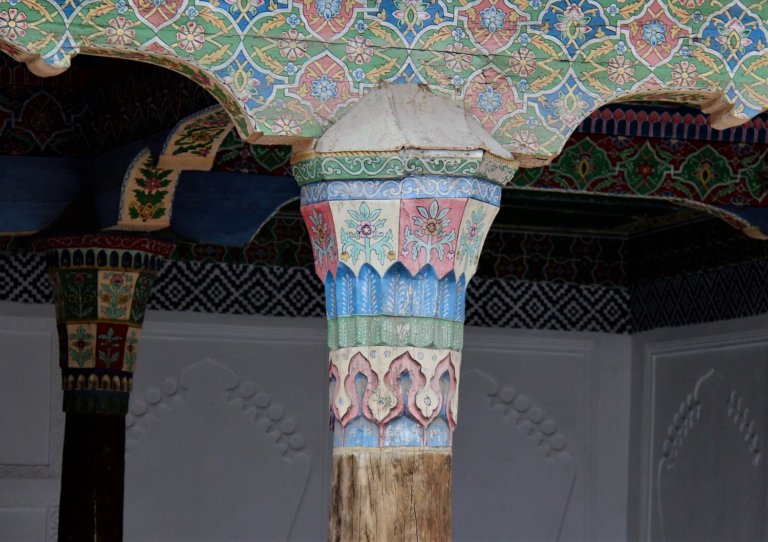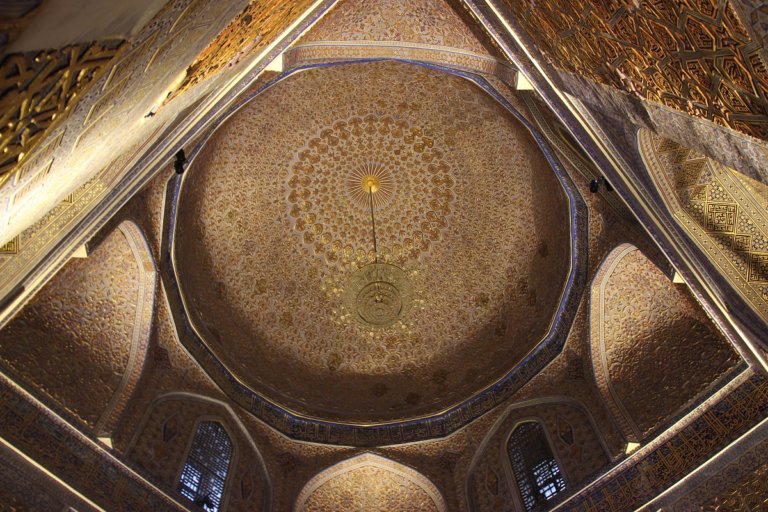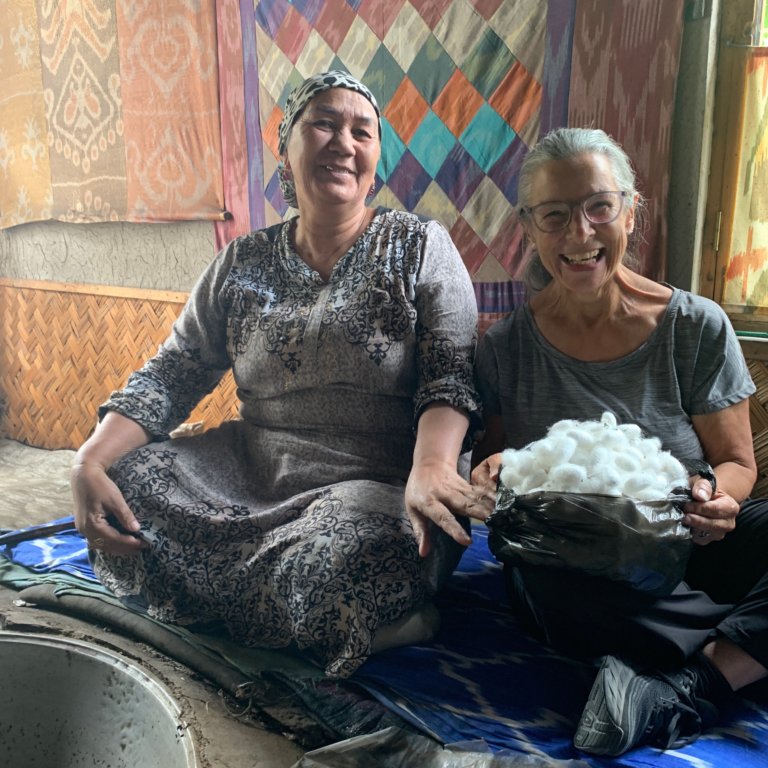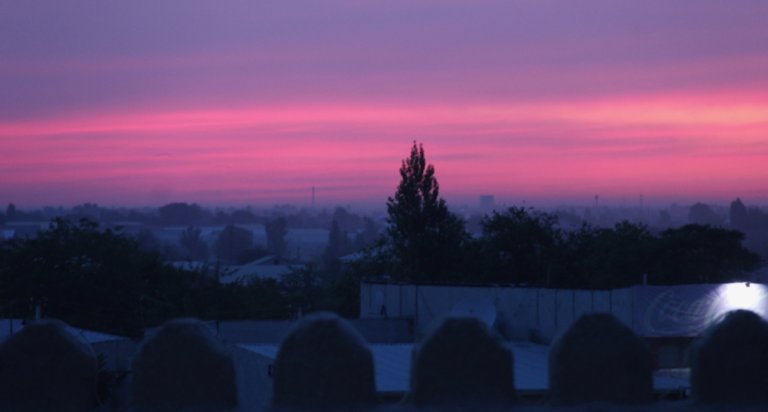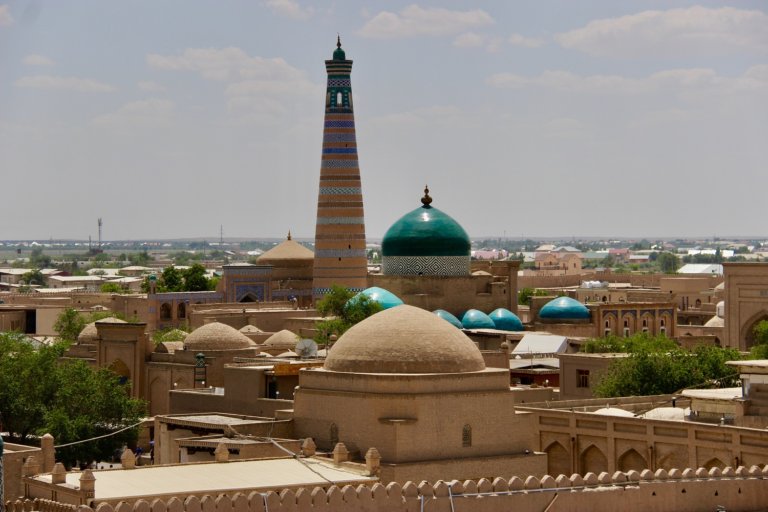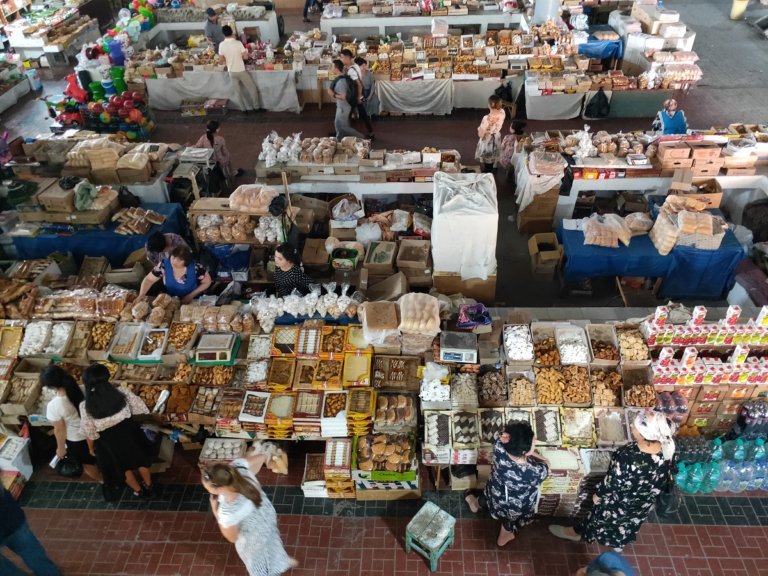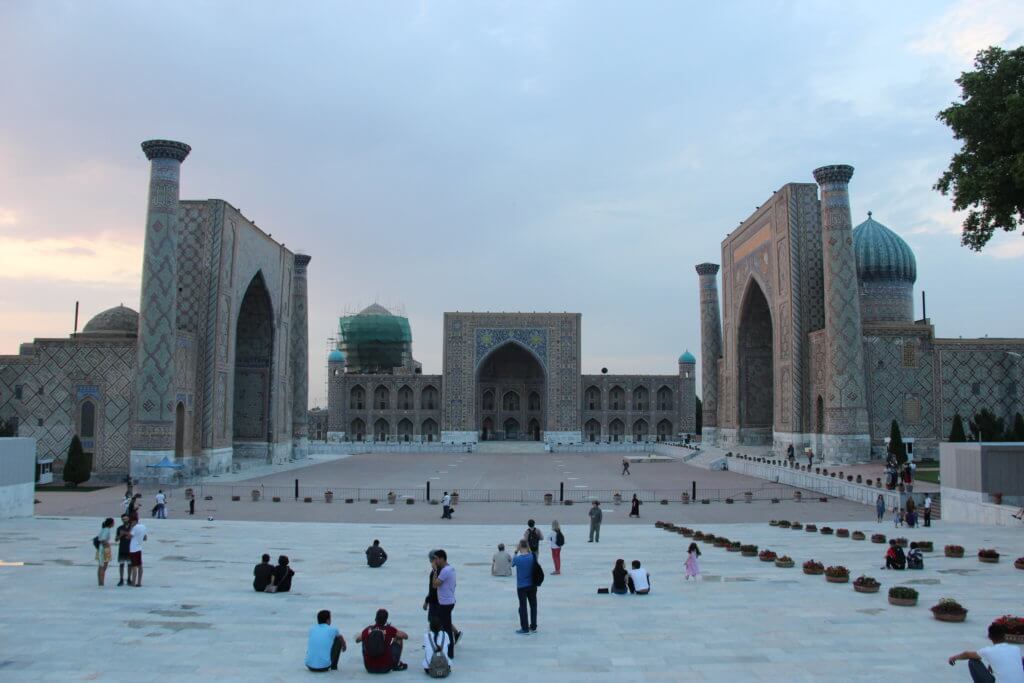
Samarkand day 31 01 June
Last night we did a reccy of Samarkand including a major attraction the Registan. A marvellous example of Islamic Architecture that we both love. So we were looking forward to getting out today back to the Registan and on to the other attractions.
The Registan is a large open square with an open approach and the other three sides consisting of three individual madrassas.Registan means “sandy place” and given the city is surrounded by desert it makes sense.
The complexity of trying to understanding Central Asia and its cities is daunting at times and makes it truly difficult to understand at what level to appreciate things.Do we simply admire the buildings and the architecture do we try and understand the history behind them? If the latter where do you start? Should we have stayed longer?
Samarkand is a great example of that complexity as it has changed hands many times over its two and a half thousand years.Alexander came, the Arabs invaded and brought Islam and Genghis Khan destroyed it and its position as capital of a region swapped backwards and forwards with Bukhara a couple of times.
And of course each change had a cultural impact that left its mark.It appears that modern politicians in each of the “stans” have tried to reduce the complexity in their citizen’s minds by building a narrative around a single heroic figure. In Uzbekistan’s case that hero is Timur also known in the english speaking world as Tamerlane.The previous Uzbek president Karimov styled himself as “Little Timur” and has his own Mausoleum in Samarkand.His statues are everywhere but he is important because most of the stunning architecture can be attributed to him or his dynasty.
So in trying to work out how to distil our experiences I guess we have got to: admire the architecture and accept that the cultural references that the current society uses might not tell the full story but is a starting point.
So in Timur’s case we have someone who was born in 1336 in Uzbekistan and created the Timurid Empire which extended from Central Asia taking in parts of Russia and the former Khanates created by Genghis all the way to India.His capital was Samarkand and therefore the buildings he created or inspired have become important symbols of Uzbekistan culture.He is seen as “restoring to life the dignity of the Muslim world” and ‘developed Samarkand as the heart of his Empire”. Looking at his history one starts to understand why he has been developed as a hero figure.
So, on to the buildings, first stop was the Registan with its three madrassas all of them very different.The first the Ulugbek Madrassa.This was named after a grand son of Timur’s who was an in intellectual and astronomer and he used it as a place of education where he was the head ‘Lecturer”.It has the standard madrassa configuration of two floors with student cells.
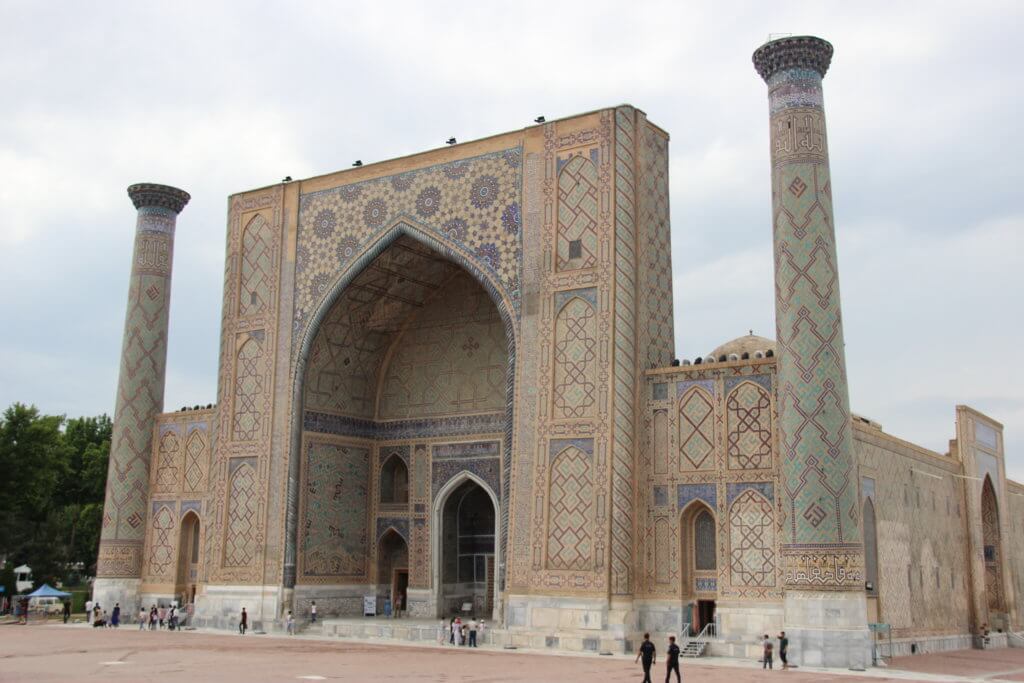
Moving on around the Registan we come to the Tilla-Kari Madrassa whose interior was meant to amaze the world through its extensive use of gold leaf.Well it succeeded with us!

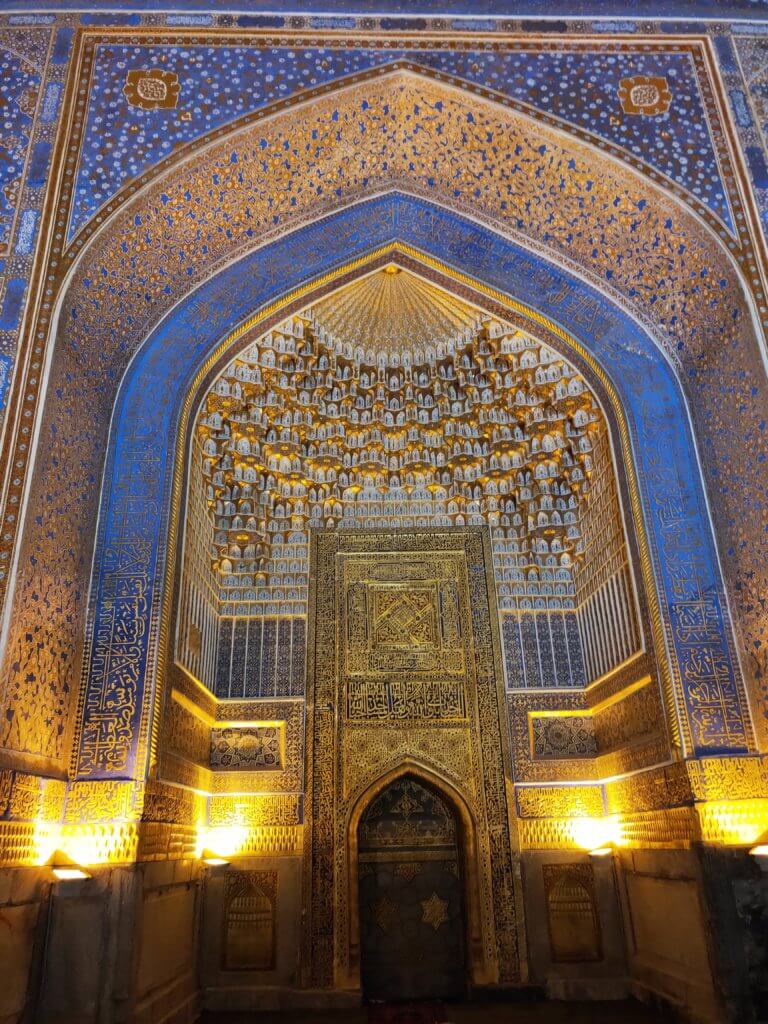
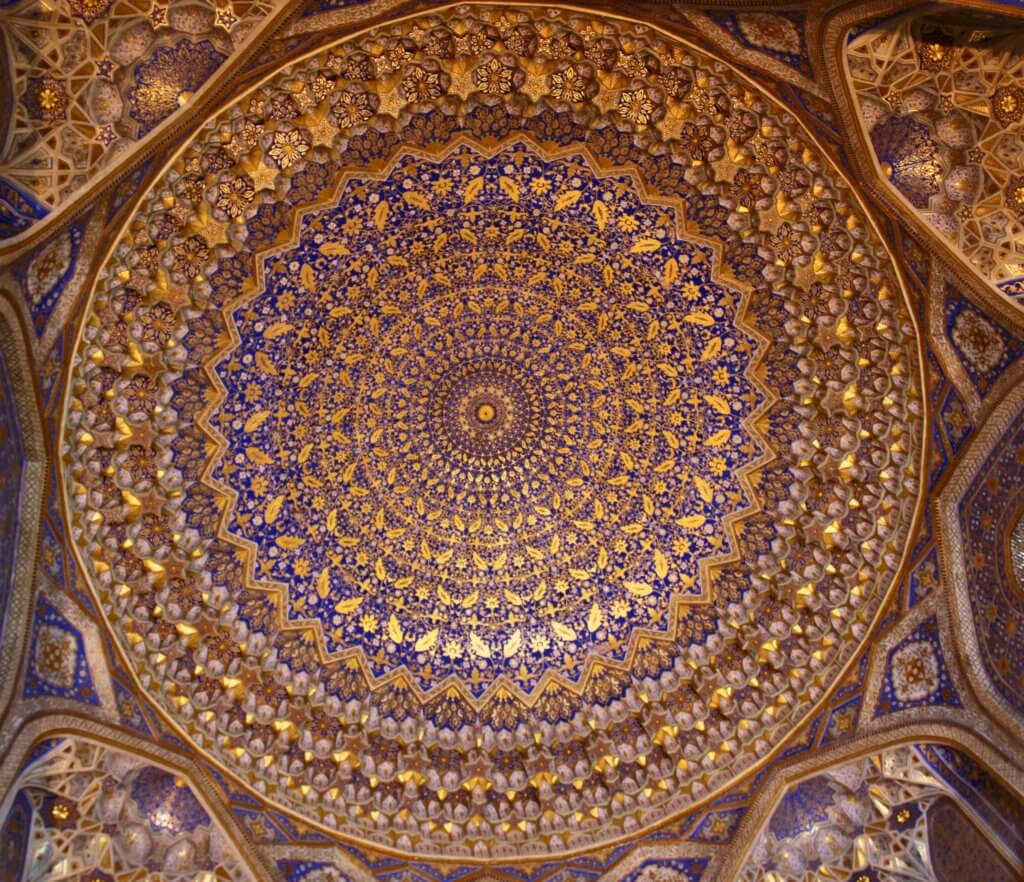
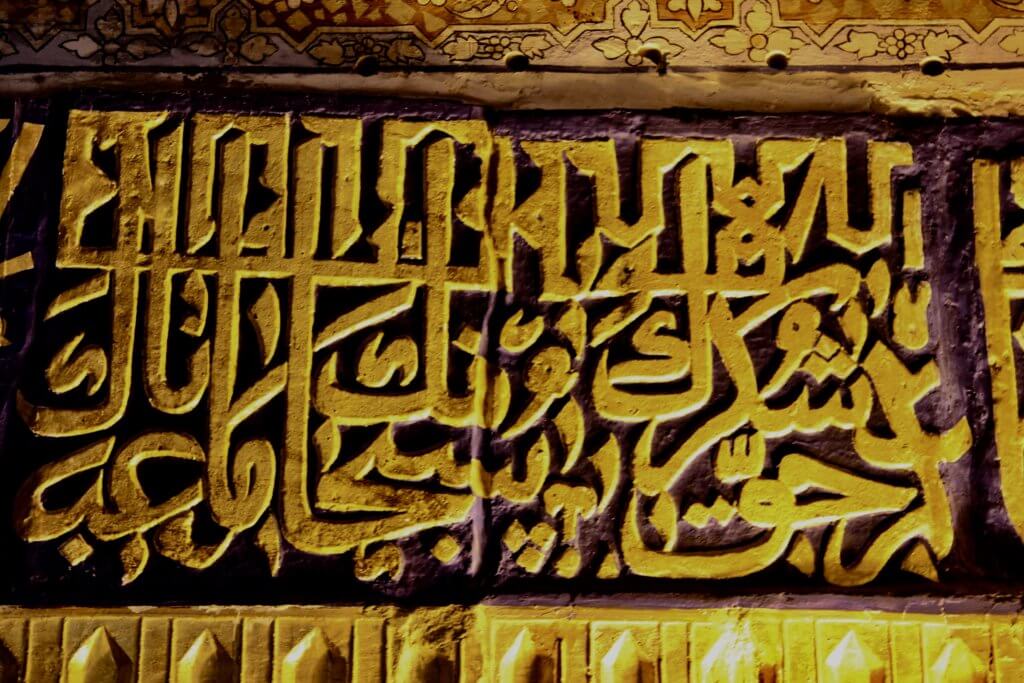
The final madrassa in the Registan, the Sher-Dora has an unusual feature over the entrance.it features what as been described as two solar tiger lions.Unfortunately you will have to take my word for it but what look like tiger heads do have manes when you see them close up.They also have a human face and sun rays on top of them which signifies as connection with the rest of the cosmos.The most interesting thing is that anything living is not normally permitted to decorate a mosque.There is a theory that it signifies the son in law of Mohammed Ali who had the title ” the lion of Allah”.Also that lions were hunted in parks nearby.There appear to be enough theories that indicate that no one really knows.
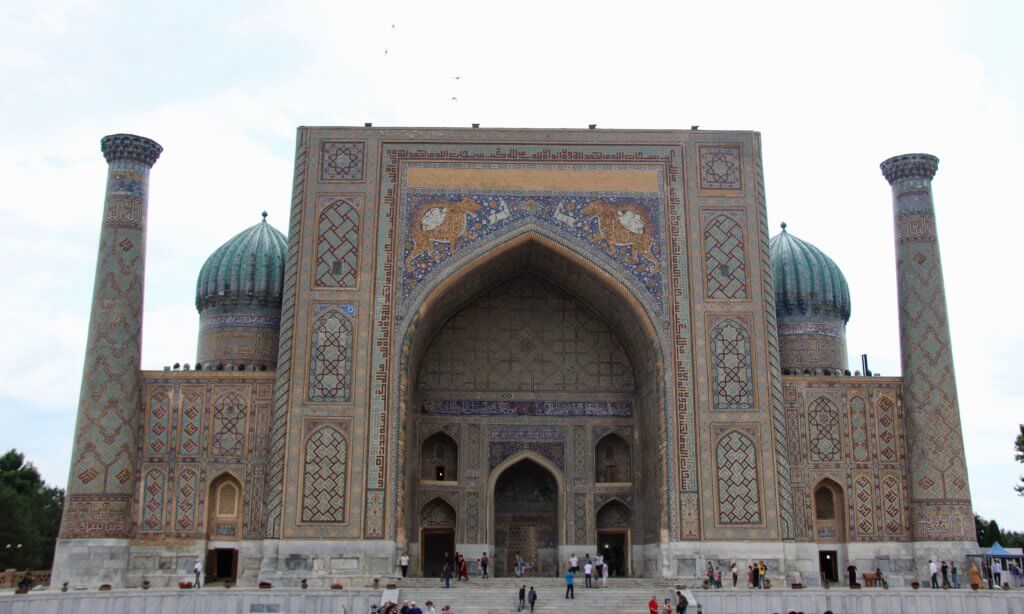
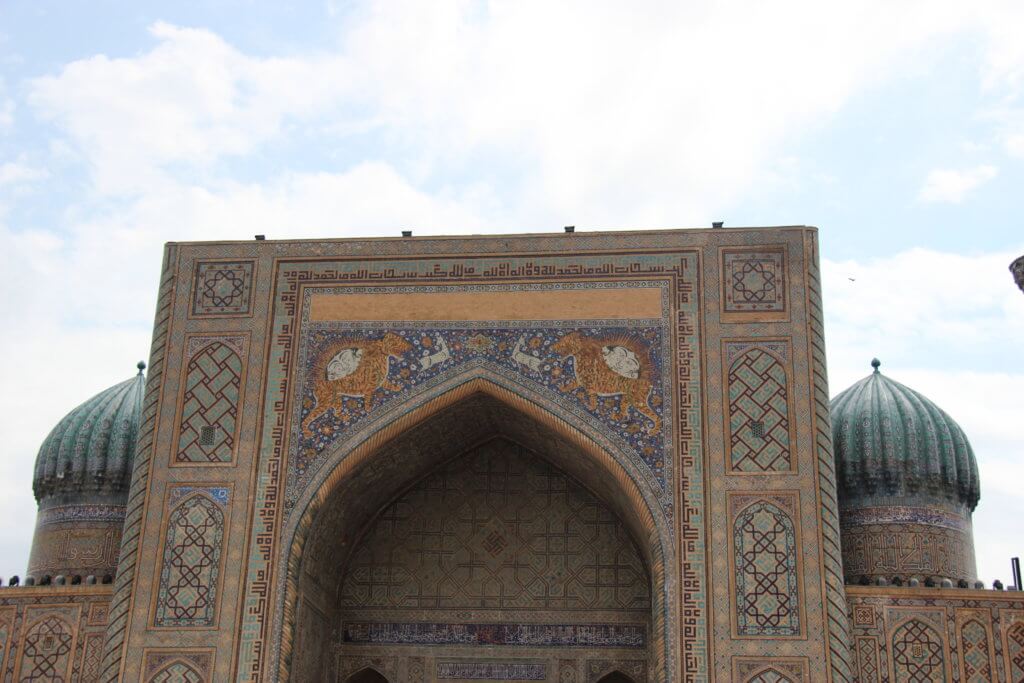



From here we went to the BiBi Khanym mosque which Timur built for his wife.The story attached to this particular mosque was that the architect fell in in love with the wife and asked for a kiss.She granted him one on the cheek but it left a mark which Timur saw.One story suggests the architect fled to the top of the minaret and grew wing and flew away.Another version says that Timur grabbed him and him executed.Choose your story 😉
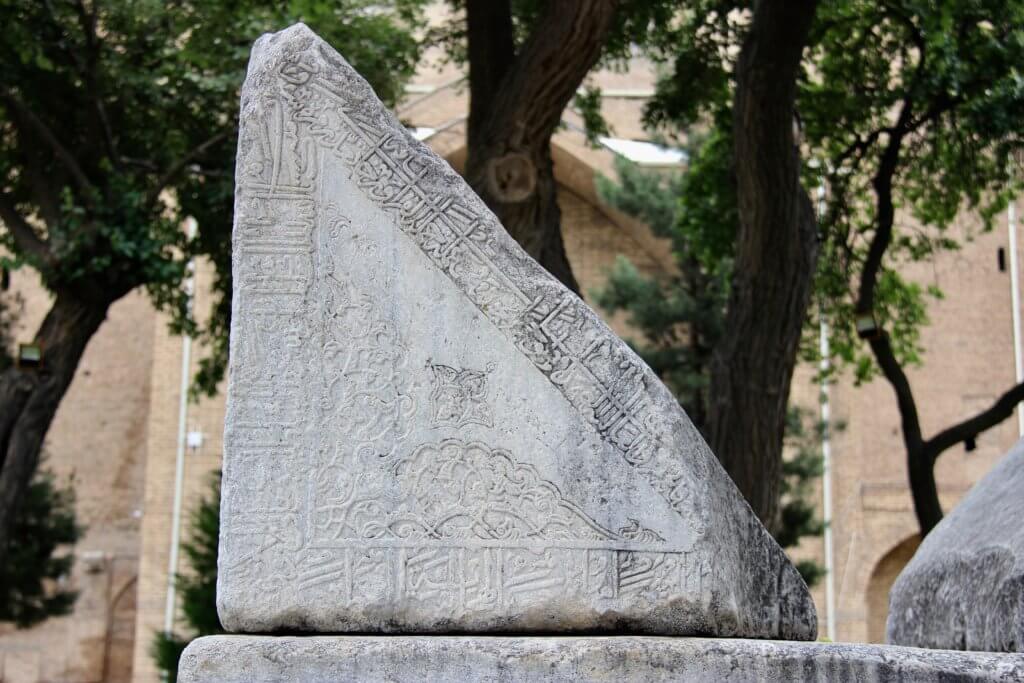
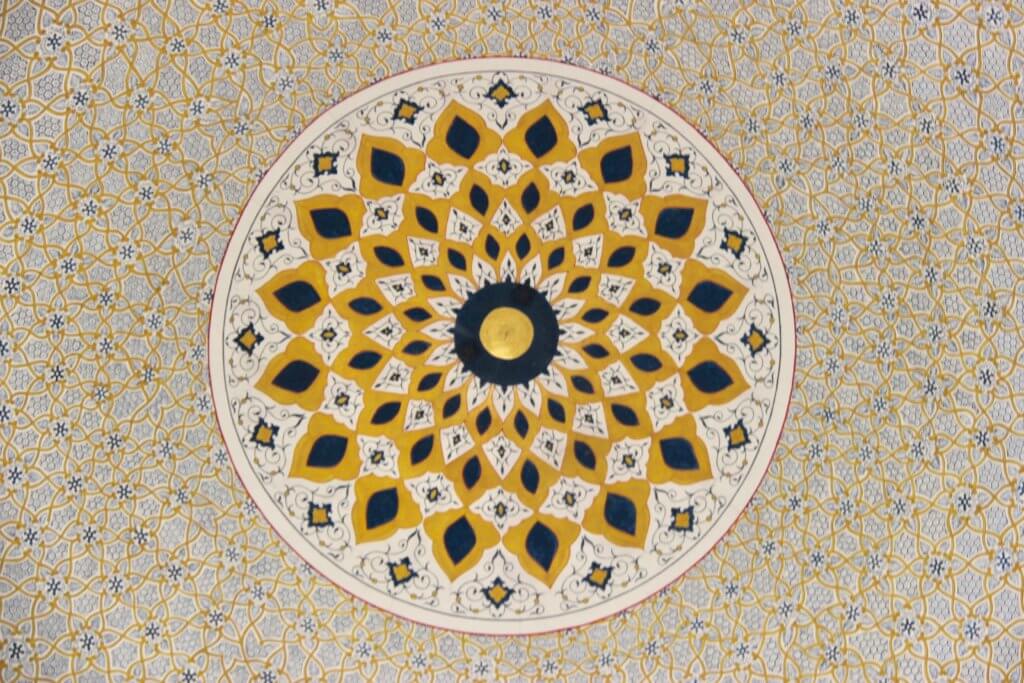
Then we were simply dropped by the driver at a site that we really knew nothing about and he didn’t have the English to explain. Anyway we walked in and it was one of those “glad we came” moments. We had come across Ulugbek’s name before at the madrassa in the Registan.But here he had done something special which was to make him a famous astronomer.In 1420 he built an observatory in order to chart stars and their movements.This was important to Islamic religious rituals but also to the study of astrology.He used it to publish a catalogue of 1018 stars, it was about thirty metres high and forty six in circumference.It was destroyed in the middle ages but found after a piece of the catalogue was published in Oxford in 1648. Found by a Russian archeologist in 1908 excavated in 1948 and now partially restored. I do not pretend to understand how it worked but it appears that the arc which can see in the photos below was used to plot the stars as the light came through the roof.
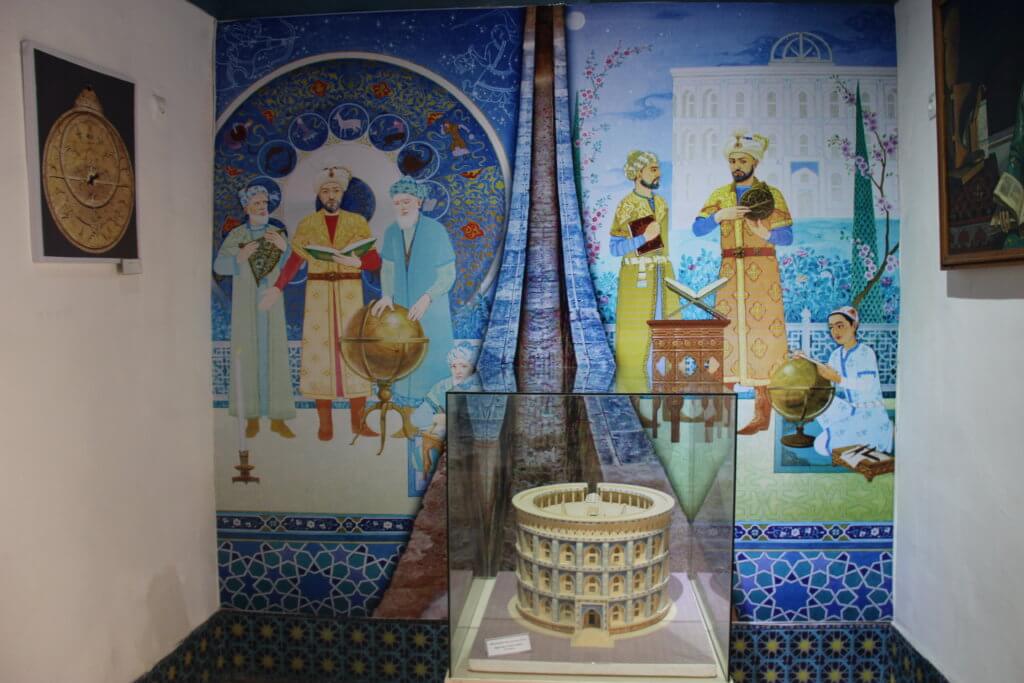
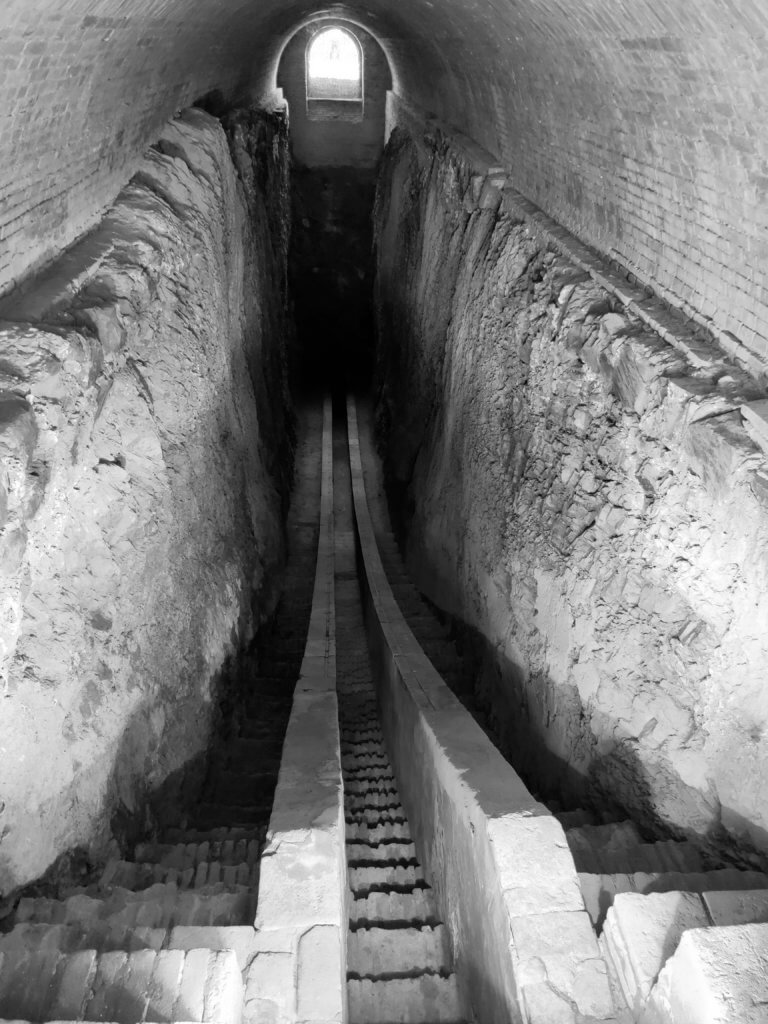
Then on to the Afrosiab museum which marks the site of the original city dated in the 7th century BC. The museum had a collection of the artefacts showing the various layers that have been excavated over the years.
Final stop for the day was Shah-I Zindah also known as the “Underground King”.It is a collection of mausoleums that started with one for the cousin of Mohammed, Kusam Ibn Abbas who brought Islam to Samarkand. He was killed in the 7th century and the story is that he was beheaded, however he picked it up and jumped into a well where he still lives today! A mausoleum was created for him and then over the years others placed next to it. The closeness of the mausoleums to each other gives it an eerie feel but the ceramic work is amazing.
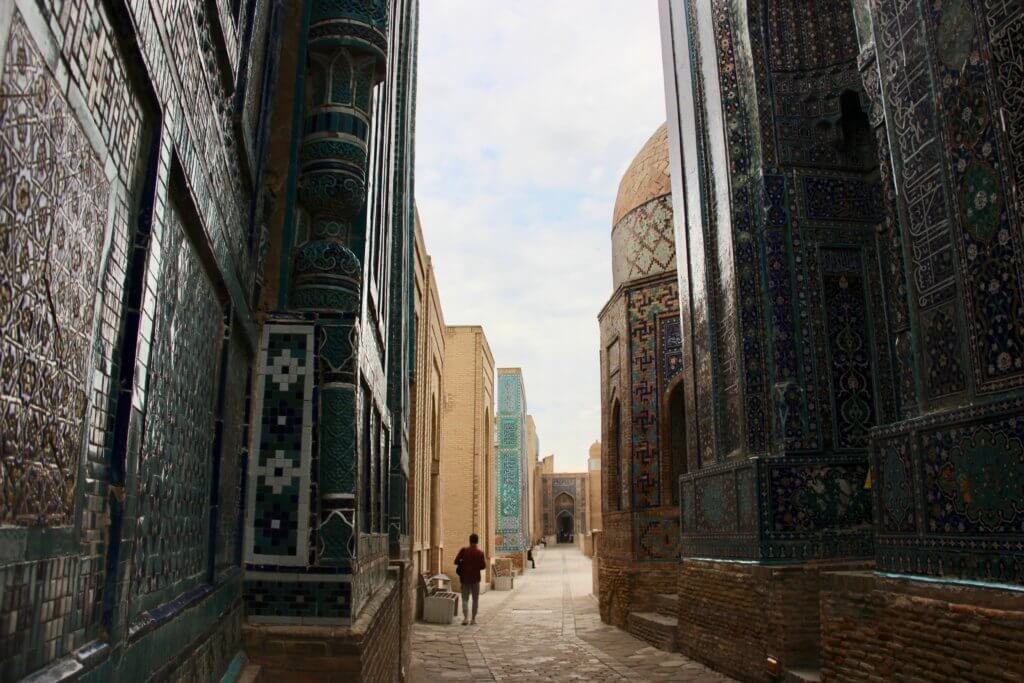

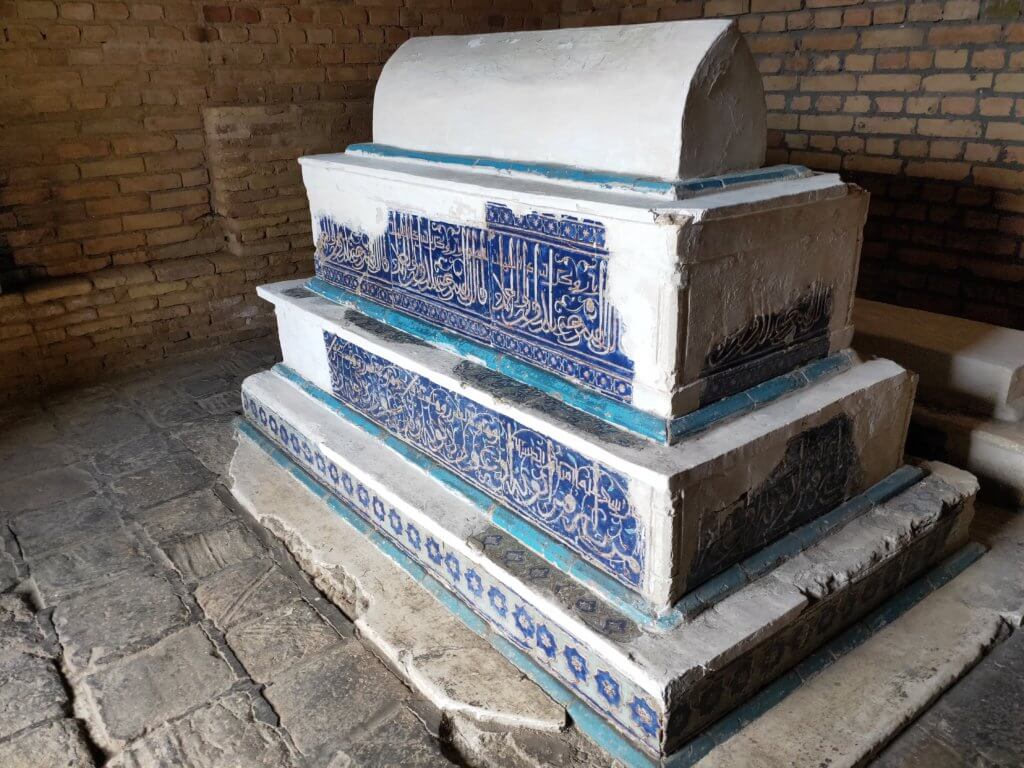

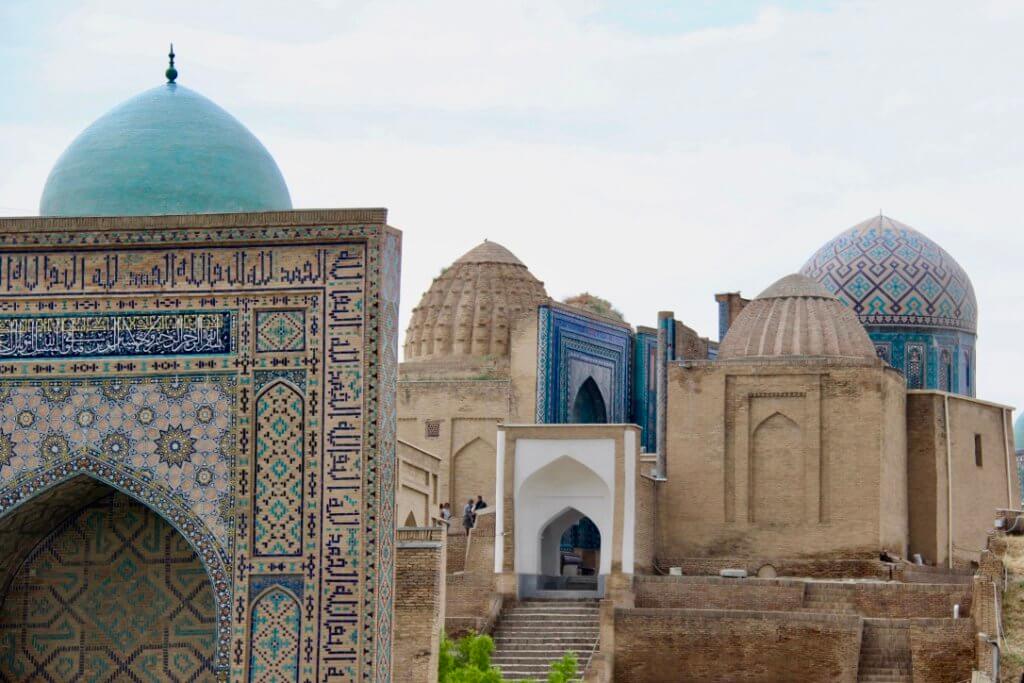
So again an amazing day when one is left wondering how you put it all in perspective? There is so much to appreciate and understand which is why I guess that some people specialise in specific areas of architecture history and art.
